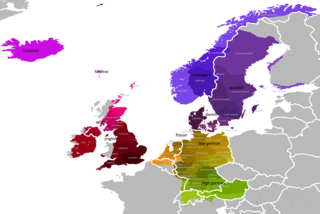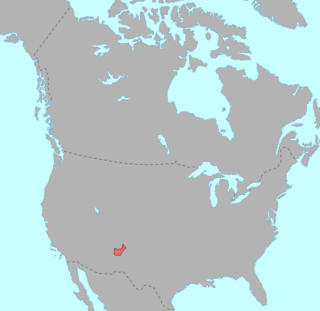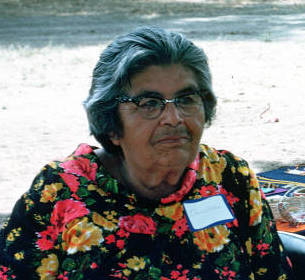
The Germanic languages are a branch of the Indo-European language family spoken natively by a population of about 515 million people mainly in Europe, North America, Oceania and Southern Africa. The most widely spoken Germanic language, English, is also the world's most widely spoken language with an estimated 2 billion speakers. All Germanic languages are derived from Proto-Germanic, spoken in Iron Age Scandinavia.

The Northwest Caucasian languages, also called West Caucasian, Abkhazo-Adyghean, Abkhazo-Circassian, Circassic, or sometimes Pontic languages, is a family of languages spoken in the northwestern Caucasus region, chiefly in three Russian republics, the disputed territory of Abkhazia, Georgia, and Turkey, with smaller communities scattered throughout the Middle East.

Cloverdale is a city in Sonoma County, California, United States; it is both the westernmost and the northernmost city in the San Francisco Bay Area. The San Francisco and North Pacific Railroad reached Cloverdale in 1872. The Cloverdale Rancheria of Pomo Indians of California is headquartered there. The population was 8,618 at the 2010 census.

The Eskaleut, Eskimo–Aleut or Inuit–Yupik–Unangan languages are a language family native to the northern portions of the North American continent, and a small part of northeastern Asia. Languages in the family are indigenous to parts of what are now the United States (Alaska); Canada including Nunavut, Northwest Territories, northern Quebec (Nunavik), and northern Labrador (Nunatsiavut); Greenland; and the Russian Far East. The language family is also known as Eskaleutian, Eskaleutic or Inuit–Yupik–Unangan.

The Pomo are a Native American people of California. Historical Pomo territory in Northern California was large, bordered by the Pacific Coast to the west, extending inland to Clear Lake, and mainly between Cleone and Duncans Point. One small group, the Tceefoka, lived in the vicinity of present-day Stonyford in Colusa County, separated from the core Pomo area by lands inhabited by Yuki and Wintuan speakers.

Keres, also Keresan, is a Native American language, spoken by the Keres Pueblo people in New Mexico. Depending on the analysis, Keres is considered a small language family or a language isolate with several dialects. The varieties of each of the seven Keres pueblos are mutually intelligible with its closest neighbors. There are significant differences between the Western and Eastern groups, which are sometimes counted as separate languages.
The Achumawi language is the indigenous language spoken by the Pit River people in the northeast corner of present-day California. The term Achumawi is an anglicization of the name of the Fall River band, ajúmmááwí, from ajúmmá "river". Originally there were nine bands, with dialect differences primarily between upriver and downriver, demarcated by the Big Valley mountains east of the Fall River valley.

Numic is a branch of the Uto-Aztecan language family. It includes seven languages spoken by Native American peoples traditionally living in the Great Basin, Colorado River basin, Snake River basin, and southern Great Plains. The word Numic comes from the cognate word in all Numic languages for “person”, which reconstructs to Proto-Numic as. For example, in the three Central Numic languages and the two Western Numic languages it is. In Kawaiisu it is and in Colorado River, and.

Chumashan was a family of languages that were spoken on the southern California coast by Native American Chumash people, from the Coastal plains and valleys of San Luis Obispo to Malibu, neighboring inland and Transverse Ranges valleys and canyons east to bordering the San Joaquin Valley, to three adjacent Channel Islands: San Miguel, Santa Rosa, and Santa Cruz.

The Pomoan, or Pomo, languages are a small family of seven languages indigenous to northern California spoken by the Pomo people, whose ancestors lived in the valley of the Russian River and the Clear Lake basin. Four languages are extinct, and all surviving languages except Kashaya have fewer than ten speakers.

The Kashia Band of Pomo Indians of the Stewarts Point Rancheria is a federally recognized tribe of Pomo people in Sonoma County, California. They are also known as the Kashaya Pomo.

Mono is a Native American language of the Numic group of Uto-Aztecan languages, the ancestral language of the Mono people. Mono consists of two dialects, Eastern and Western. The name "Monachi" is commonly used in reference to Western Mono and "Owens Valley Paiute" in reference to Eastern Mono. In 1925, Alfred Kroeber estimated that Mono had 3,000 to 4,000 speakers. As of 1994, only 37 elderly people spoke Mono as their first language. It is classified as critically endangered by UNESCO. It is spoken in the southern Sierra Nevada, the Mono Basin, and the Owens Valley of central-eastern California. Mono is most closely related to Northern Paiute; these two are classified as the Western group of the Numic branch of the Uto-Aztecan language family.

Eastern Pomo, also known as Clear Lake Pomo, is a nearly extinct Pomoan language spoken around Clear Lake in Lake County, California by one of the Pomo peoples.

Kashaya is the critically endangered language of the Kashia band of the Pomo people. The Pomoan languages have been classified as part of the Hokan language family. The name Kashaya corresponds to words in neighboring languages with meanings such as "skillful" and "expert gambler". It is spoken by the Kashia Band of Pomo Indians of the Stewarts Point Rancheria.
The Cloverdale Rancheria of Pomo Indians of California is a federally recognized tribe of Pomo Indians in California. The tribe is currently considered "landless", as they do not have any land that is in Federal Trust. In 2008 they acquired approximately 80 acres (32 ha) of property on the southern end of Cloverdale, California. The property is currently going through the Fee to Trust process to become the tribe's landbase.

Elsie Comanche Allen was a Native American Pomo basket weaver from the Cloverdale Rancheria of Pomo Indians of California in Northern California, significant as for historically categorizing and teaching Californian Indian basket patterns and techniques and sustaining traditional Pomo basketry as an art form.

Southeastern Pomo, also known by the dialect names Elem Pomo, Koi Nation Lower Lake Pomo and Sulfur Bank Pomo, is one of seven distinct languages comprising the Pomoan language family of Northern California. In the language's prime, Southeastern Pomo was spoken primarily in an area surrounding East Lake and Lower Lake, in Lake County, along the eastern coast of Clear Lake, in Northern California by the Pomo people. Southeastern Pomos inhabited an area on the northern bank of Cache Creek, and the Sulfur Bank Rancheria. Dialectal differences between the two sites of habitation seem to be minimal, and may be limited to a small number of lexical differences.

The Dry Creek Rancheria Band of Pomo Indians is a federally recognized tribe of Pomo people, an indigenous people of California. It has a reservation near Geyserville, California, in Sonoma County, where it operates the River Rock Casino Resort.
Patwin (Patween) is a critically endangered Wintuan language of Northern California. As of 2021, there was one documented first language speaker of Patwin. As of 2010, Patwin language classes were taught at the Yocha Dehe Wintun Nation tribal school.
The phonology of the Massachusett language was re-introduced to the Mashpee, Aquinnah, Herring Pond and Assonet tribes that participate in the Wôpanâak Language Reclamation Project, co-founded by Jessie Little Doe Baird in 1993. The phonology is based regular sound changes that took place in the development of Proto-Eastern Algonquian from Proto-Algonquian, as well as cues in the colonial orthography regarding pronunciation, as the writing system was based on English pronunciation and spelling conventions in use at the time, keeping in mind differences in late seventeenth century English versus today. Other resources included information from extant Algonquian languages with native speakers.















